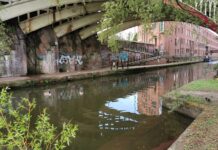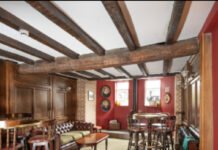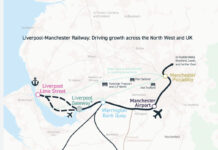The Science and Industry Museum has revealed new footage to showcase the scale and
ambition of its seven-acre restoration programme, being delivered while the museum
remains open to visitors.
The multi-million-pound restoration programme is underway to carry out critical restoration
work and reveal new spaces and perspectives for all visitors to enjoy, play and learn in.
The museum explores how ideas can change the world—from the industrial revolution to
today and beyond.
Located at the site of the world’s first intercity railway, the museum is of
significant heritage interest, with several grade I and grade II listed buildings occupying its
seven-acre, city-centre site. It is located between Castlefield, the Roman heart of
Manchester, and The Factory – a landmark new cultural space in the city that will open next
year.
The Science and Industry Museum is undertaking critical restoration work to transform its
Victorian buildings and create improved gallery experiences, which include the iconic Power
Hall, where the term Northern Powerhouse was coined, and the 1830 Station and
Warehouse – some of the world’s earliest railway buildings in the world’s first industrial city.
The restoration works are in addition to huge environmental improvements across the site
and opening-up new spaces for visitors, such as the award-winning Special Exhibitions
Gallery – now originating and hosting ground-breaking science exhibitions and experiences,
including current exhibition, Amazônia.
The museum is also creating new connections through to The Factory, and the River Irwell
beyond, enhancing the sense of place as this vibrant quarter in Manchester is reimagined in
the coming years. Outdoor areas are also being planted with colourful new schemes to
encourage biodiversity and indoor and outdoor areas for families are being developed.
Director of The Science and Industry Museum, Sally MacDonald, says:
“This is a very exciting time. We have the honour of occupying some truly exceptional buildings, which are in urgent need of restoration. We are working with specialists and taking great care to transform them, addressing historic issues to conserve important details, but also looking to the future to ensure our buildings are sustainable and provide the best experiences for visitors.
“We’re carrying out a large programme of decarbonisation across the site, adopting new
technologies to ensure that our buildings are standing strong and using less carbon. The
technology we use will become part of our ongoing story as we welcome the scientists and
innovators of the future through our doors to learn more about how ideas shape our world.
“What’s more, we are in a district of Manchester where we have some incredible neighbours.It’s our ambition that visitors can walk easily in between all these outstanding attractions,enhancing the sense of place and visitor experience.
“We’re sorry if the work causes disruption, but we are sure that the final results will be well
worth it, as more visitors from our local communities and beyond can enjoy the museum and continue to be inspired by the wonder of science and industry.”
The film, which was created by David Bewick at Boca films, includes drone footage giving an aerial view of the site, outlining the huge footprint of the museum. It shows the work being delivered on the Power Hall roof, which is the size of a premiership football pitch.
The 1830 Warehouse has been repointed and internal timber joists have been repaired and
restored. The 1830 Station has also had roofing repairs to make it watertight. Future plans
for the 1830 Station include the development of a revolutionary railroad and locomotive
experience to tell the railway story, as well as much improved learning spaces. Research is
also underway on further new galleries focusing on Manchester as a “City of Ideas” and the
broader story around “Cottonopolis”.
Bev Craig, Leader of Manchester City Council says: “We welcome the significant
investments being made to restore and improve the Science and Industry Museum. What
can be achieved here will bring lifelong benefit to everyone who lives in and visits the city. It can transform the site into a place that not just explores ideas that change the world but a museum that can itself change people’s worlds through wonder and play, and inspire
curiosity, confidence, and skills.”
The Science and Industry Museum remains open to visitors with plenty to do and see including the Revolution Manchester, Textiles and Experiment galleries and changing exhibitions and experiences including Amazônia, Power Up and display celebrating 100 years of the BBC in Manchester. The museum also recently announced world premiere exhibition and experiences as part of this year’s Manchester Science Festival this October and is a partner for the National Trust’s Castlefield Viaduct.







